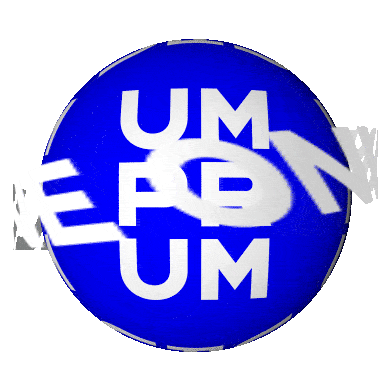



In the second week of June, after months of intensive work, the UMPRUM reopened to the public and offered the opportunity to view the students’ final works exhibited in approximately 30 studio doors open for discovery.
25 studios from five different departments tackled different topics, but one thing united them. In addition to the frequently resonating questions of sustainability and pointing to the environmental crisis, the assignment subconsciously reflected on the themes of safety, sensitivity, and cooperation - pillars that are increasingly important nowadays and which society is beginning to realize are often lacking.
Whether the topics are chosen purposefully, or whether students and teachers tend to them subconsciously out of a need to make this world a better place, they are shown as resonating theses, which are meant to unite, not divide, with the help of the exhibited works.
STUDIO OF ARCHITECTURE I
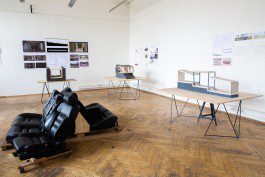
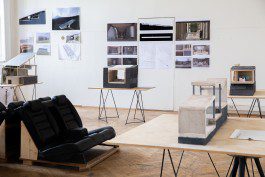
The first of the four architecture studios developed a semester assignment entitled "Services / work / winemaking". The students worked with a specific plot of land and winery in the Velké Žernoseky area. In the final results, various overlaps and views of the task appeared, from a conveyor belt trying to eliminate the disturbance of the hilly terrain to a consideration of the industrialization of the region, and from this, a subtle wooden building for multifunctional leisure use emerged.
STUDIO OF ARCHITECTURE II
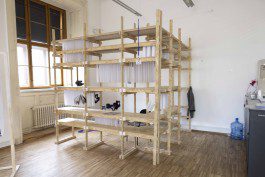
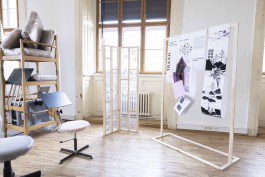
The Studio of Architecture II observes the world as a place where the insecurity and undervaluation of work is becoming an increasingly urgent and frequent problem. This issue is also the topic of the Czech Republic's pavilion at this year's Architecture Biennale in Venice, where the A2 students will be residing for their "Teambuilding" this year. In their works, they confronted themselves with the issue of work in architecture and approached it as professionals at the very beginning of their careers.
STUDIO OF ARCHITECTURE III
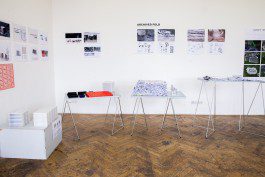
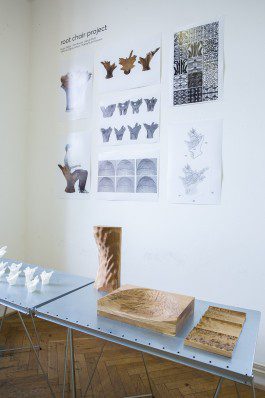
The students of the Studio of Architecture III completed a series of short tasks responding to an increasingly resonant tool of artificial intelligence, which is changing approaches in architectural practice as well. The tasks bearing the names My Bespoke AI, Robinson Chairs, and Mycelium Landscape dealt with materiality, in combination with AI, which is immaterial in principle, but also with the continuous research of mycelium, which has been going on in this studio for a long time. The final results were material chairs, theories, and designs depicting futuristic scenarios of the architecture of the future.
STUDIO OF ARCHITECTURE IV
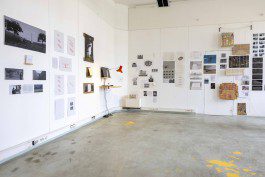

The Studio of Architecture IV dealt with the personality of the recently deceased artist and publicist Jiří Hůla, founder of the open institution Archive of Fine Arts. Using fine arts creations, the students tried to develop this heritage and point out its relevance and importance.
STUDIO OF CERAMICS AND PORCELAIN
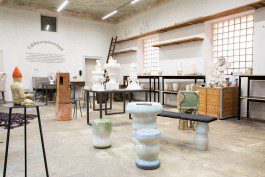
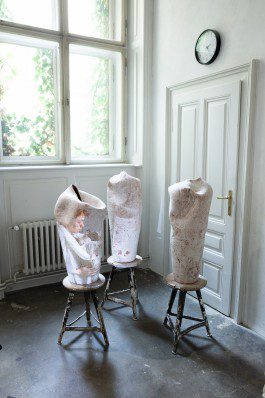
Following the ideas of William Morris, John Ruskin, Glen Adamson, and others, the Studio of Ceramics and Porcelain reflected on the emotional dimension of the production of applied art according to the considerations mentioned above. Under the collective name "Make your life better" several projects containing both wit and sensitive concepts were created.
STUDIO OF CONCEPT – OBJECT – MEANING (K.O.V.)
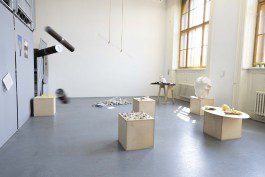

The students of the Studio of Concept – Object – Meaning (K.O.V.) reacted to this year's event resonating in Czech society - the accession of the new head of state and first lady. The students were tasked to create a piece of jewellery for any of the two aforementioned personalities. Apart from the quality of the craftsmanship, the jewellery was also to bring added value in the form of a symbolic message for the presidential office.
STUDIO OF GLASS

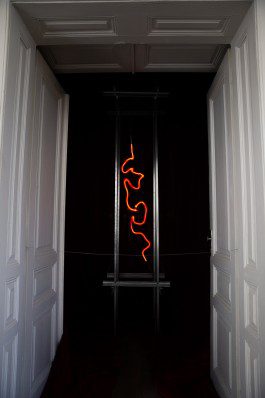
The Glass in Architecture assignment included the possibility of designing a sculpture, stained glass, or light installation to be inserted into a specific existing building or a newly emerging project in collaboration with its architects. The students often responded to the assignment with individual approaches and, apart from the applied objects, interventions of a looser nature were created.
STUDIO OF TEXTILE DESIGN


The Studio of Textile Design, similarly to the Studio of Glass, focused on using the potential of "its materials" in architecture. As an output, the pieces focused on safe spaces or responded to a specific building or issue within it.
STUDIO OF FASHION AND FOOTWEAR DESIGN
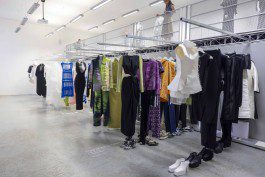
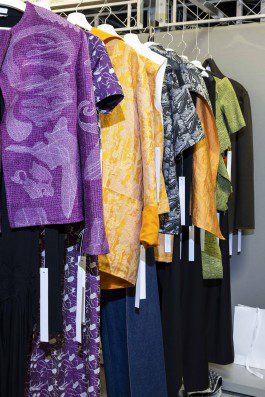
The Studio of Fashion and Footwear Design continued to develop the "My brand" assignment, which, in addition to the development of individual models targeted at a specific type of customer, included the design of the visual identity used in the enclosed price list and other essentials such as signs or packaging material for the displayed garments.
STUDIO OF FASHION DESIGN
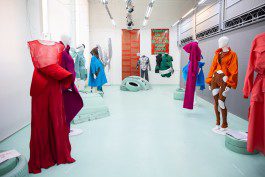
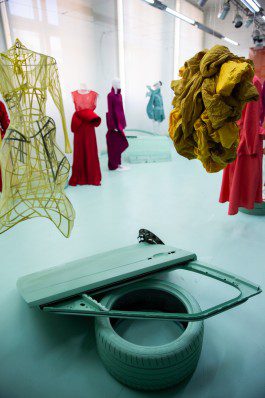
The Studio of Fashion Design has established a cooperation with Porsche on the occasion of the 75th anniversary of the founding of the car company. Using the theme "All the colours of Porsche", the students focused on the similarity between clothing and the world of motoring, while taking inspiration from the colours that are significant for the brand.
STUDIO OF FINE ARTS I (SCULPTURE)


With the assignment "Fragile Forms, Resilient Forms", the Studio of Fine Arts I (Sculpture) encouraged students to explore vulnerability and fragility in art in an interdisciplinary way. The final result was a five-day performative symposium at Ostrava's PLATO Gallery in May 2023.
STUDIO OF FINE ARTS II (PAINTING)

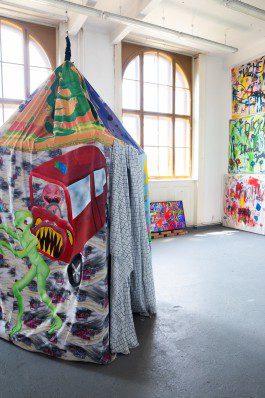
The Studio of Fine Arts II (Painting) participated in a department-wide project - an exhibition on the theme of Common Ground: the Hinterland.
STUDIO OF FINE ARTS III (INTERMEDIA)
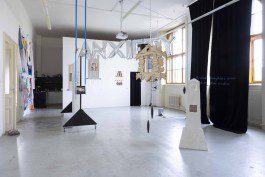
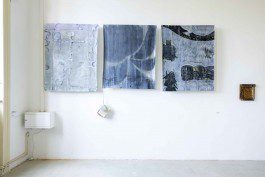
The Studio of Fine Arts III (Intermedia) dealt with the currently discussed topic "Connection", which represented the view of sharing, empathy, and artistic education as a dialogue. Like all other studios in this department, it participated in a collaborative project on the theme of Common Ground: the Hinterland.
STUDIO OF FINE ARTS IV (PHOTOGRAPHY)
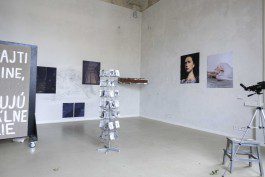
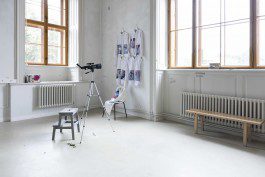
The Studio of Fine Arts IV (Photography) addressed practical and technical issues of photographic and 3D creation, enriched with authorial reflections and open-source research, with the assignment called "How to". The final project exhibition was then part of a joint departmental project, Common Ground.
THE VISITING ARTIST STUDIO
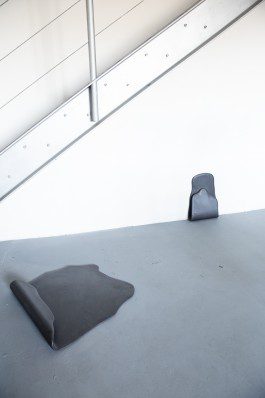

In addition to engaging in a joint departmental project Common Ground, The Visiting Artist Studio with the artist Özlem Altin explored the subtitle Let's draw a map so that we can get lost in it, borrowed from artist and activist Yoko Ono.
Students responded to concepts such as vulnerability, resilience, permeability, and multiplicity through their work.
STUDIO OF PHOTOGRAPHY II
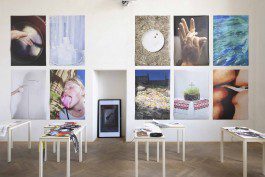
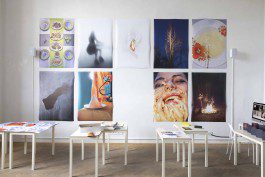
The topic "What's for dinner?" revealed photographs with an author's approach, which depicted the collection of dishes of the Studio of Ceramics and Porcelain. In addition, the photographs were intended to highlight the environmental and socio-economic issues related to this commodity. The final result was a zine containing photographs and text sections illuminating the chosen theme.
STUDIO OF DESIGN AND DIGITAL TECHNOLOGY
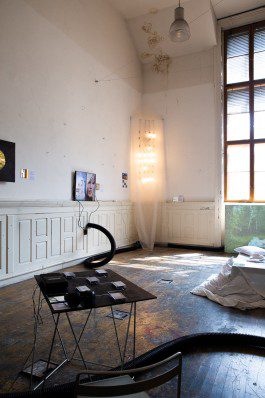
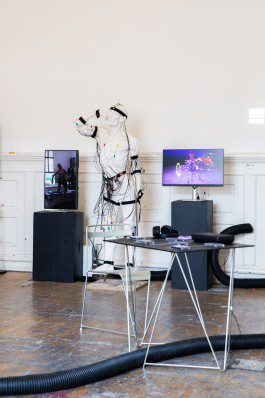
In addition to the identity of the studio's online channel, the Studio of Design and Digital Technology also worked on the theme of "Substitutability concerning the human and human physicality" - all this using contemporary digital technologies, which acted as a display medium for the students’ individual projects.
STUDIO OF GRAPHIC DESIGN AND NEW MEDIA
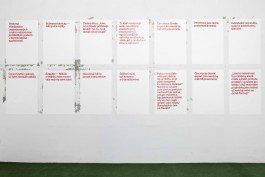
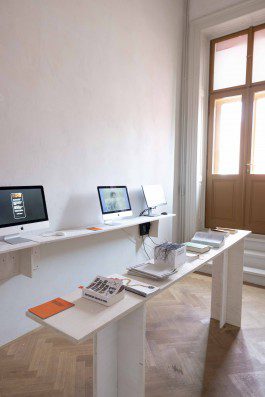
The Studio of Graphic Design and New Media oscillated between the terms "design and marketing" and reflected on the importance, and to some extent the leading force, of marketing in contemporary design. The students created a presentation of their studio from a natural position as creators of the visual content of promotional materials but also tried their hand at creating marketing strategies.
STUDIO OF FILM AND ANIMATION
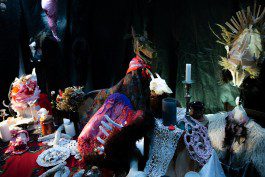
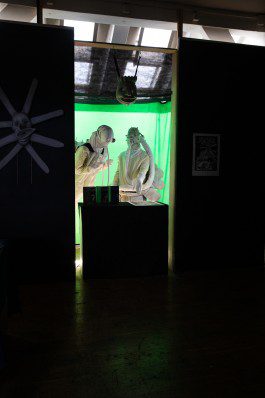
The Studio of Film and Animation approached the assignment in a rather experimental way. The students first worked on the creation of their own band and presentation materials for it. The final presentations were then enriched with musical performances of the newly established formations.
STUDIO OF GRAPHIC DESIGN AND VISUAL COMMUNICATIONS
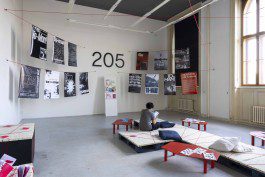
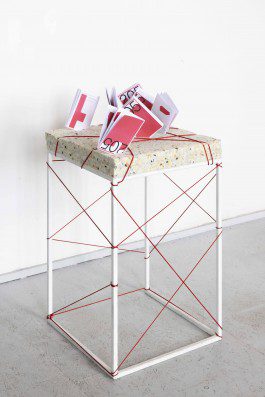
Students of the Studio of Graphic Design and Visual Communications were engaged in the creation of a medium that UMPRUM lacked until now, namely the graphic design of the school magazine, including the compilation of its relevant content. Another task was to create promotional items for a campaign for the distribution company Aerofilms.
STUDIO OF ILLUSTRATION AND GRAPHICS
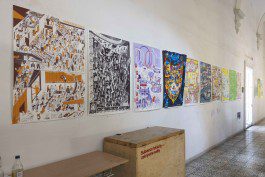
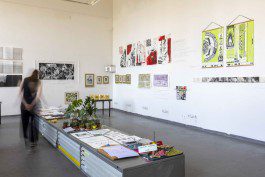
The assignment in the Studio of Illustration and Graphics, as in several other studios, was in the spirit of collaboration. Together with students of the Studio of Type Design and Typography, they worked on the creation of a book edition of a classic literary text, such as The Golem, The Wizard of Oz, or the humorous novel Klapzub's Eleven by Eduard Bass.
STUDIO OF TYPE DESIGN AND TYPOGRAPHY
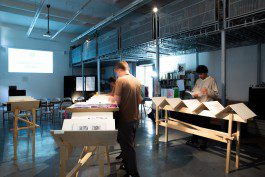
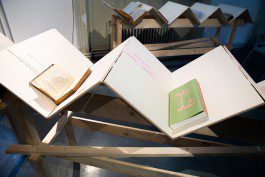
The output of the Studio of Type Design and Typography was a performative conference on the topic of the defunct Prague typeface and printing giant Gottlieb Haase und Söhne, a quest that was pursued during the semester. The resulting monographic works dealt with genealogy, family tombs, or Haase's typographic measurement system.
STUDIO OF INDUSTRIAL DESIGN
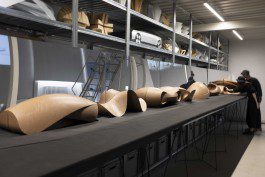
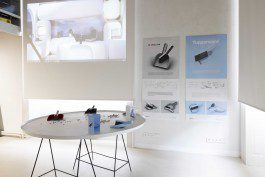
Students of the Studio of Industrial Design have used the potential of an emerging and resonant tool in design, artificial intelligence, to develop the design of kitchen utensils.
STUDIO OF PRODUCT DESIGN
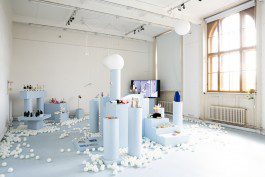
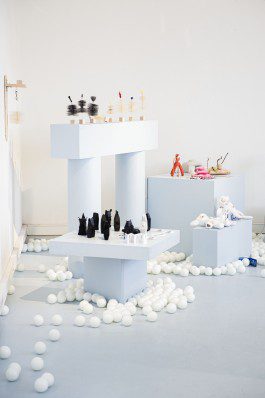
"Objects of desire", or toys for children, was this year's theme of the Studio of Product Design. The students created new experimental prototypes, haptic imaginative objects as well as variations on established functional concepts in this field.
STUDIO OF FURNITURE AND INTERIOR DESIGN
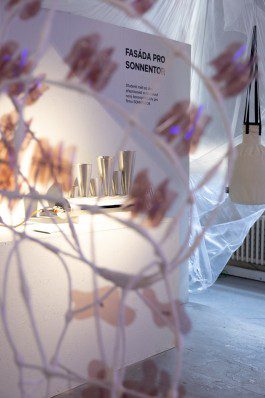
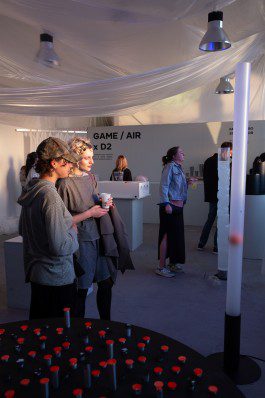
The students of the Studio of Furniture and Interior Design, as well as the students of the Product Design Studio, were generally concerned with play. The subtitle "Air Movement" defined a method of function-based play using air movement. The result was then prototypes verifying the functionality of the design, which were available for testing during the exhibition.
VISUAL ARTS
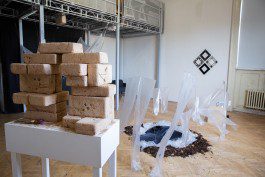
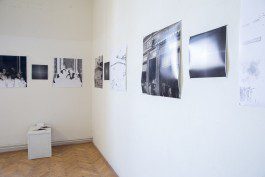
The students of the Master's program in English reflected on the topic of Restitution. Some of the works were installed in the exhibition at Villa P651 in Prague.
The article was prepared by Karla Kislingerová (The Studio of Textile Design)
Photography: Jakub Demartini and Kristína Opálková (The Studio of Photography II)

In the second week of June, after months of intensive work, the UMPRUM reopened to the public and offered the opportunity to view the students’ final works exhibited in approximately 30 studio doors open for discovery.
25 studios from five different departments tackled different topics, but one thing united them. In addition to the frequently resonating questions of sustainability and pointing to the environmental crisis, the assignment subconsciously reflected on the themes of safety, sensitivity, and cooperation - pillars that are increasingly important nowadays and which society is beginning to realize are often lacking.
Whether the topics are chosen purposefully, or whether students and teachers tend to them subconsciously out of a need to make this world a better place, they are shown as resonating theses, which are meant to unite, not divide, with the help of the exhibited works.
STUDIO OF ARCHITECTURE I


The first of the four architecture studios developed a semester assignment entitled "Services / work / winemaking". The students worked with a specific plot of land and winery in the Velké Žernoseky area. In the final results, various overlaps and views of the task appeared, from a conveyor belt trying to eliminate the disturbance of the hilly terrain to a consideration of the industrialization of the region, and from this, a subtle wooden building for multifunctional leisure use emerged.
STUDIO OF ARCHITECTURE II


The Studio of Architecture II observes the world as a place where the insecurity and undervaluation of work is becoming an increasingly urgent and frequent problem. This issue is also the topic of the Czech Republic's pavilion at this year's Architecture Biennale in Venice, where the A2 students will be residing for their "Teambuilding" this year. In their works, they confronted themselves with the issue of work in architecture and approached it as professionals at the very beginning of their careers.
STUDIO OF ARCHITECTURE III


The students of the Studio of Architecture III completed a series of short tasks responding to an increasingly resonant tool of artificial intelligence, which is changing approaches in architectural practice as well. The tasks bearing the names My Bespoke AI, Robinson Chairs, and Mycelium Landscape dealt with materiality, in combination with AI, which is immaterial in principle, but also with the continuous research of mycelium, which has been going on in this studio for a long time. The final results were material chairs, theories, and designs depicting futuristic scenarios of the architecture of the future.
STUDIO OF ARCHITECTURE IV


The Studio of Architecture IV dealt with the personality of the recently deceased artist and publicist Jiří Hůla, founder of the open institution Archive of Fine Arts. Using fine arts creations, the students tried to develop this heritage and point out its relevance and importance.
STUDIO OF CERAMICS AND PORCELAIN


Following the ideas of William Morris, John Ruskin, Glen Adamson, and others, the Studio of Ceramics and Porcelain reflected on the emotional dimension of the production of applied art according to the considerations mentioned above. Under the collective name "Make your life better" several projects containing both wit and sensitive concepts were created.
STUDIO OF CONCEPT – OBJECT – MEANING (K.O.V.)


The students of the Studio of Concept – Object – Meaning (K.O.V.) reacted to this year's event resonating in Czech society - the accession of the new head of state and first lady. The students were tasked to create a piece of jewellery for any of the two aforementioned personalities. Apart from the quality of the craftsmanship, the jewellery was also to bring added value in the form of a symbolic message for the presidential office.
STUDIO OF GLASS


The Glass in Architecture assignment included the possibility of designing a sculpture, stained glass, or light installation to be inserted into a specific existing building or a newly emerging project in collaboration with its architects. The students often responded to the assignment with individual approaches and, apart from the applied objects, interventions of a looser nature were created.
STUDIO OF TEXTILE DESIGN


The Studio of Textile Design, similarly to the Studio of Glass, focused on using the potential of "its materials" in architecture. As an output, the pieces focused on safe spaces or responded to a specific building or issue within it.
STUDIO OF FASHION AND FOOTWEAR DESIGN


The Studio of Fashion and Footwear Design continued to develop the "My brand" assignment, which, in addition to the development of individual models targeted at a specific type of customer, included the design of the visual identity used in the enclosed price list and other essentials such as signs or packaging material for the displayed garments.
STUDIO OF FASHION DESIGN


The Studio of Fashion Design has established a cooperation with Porsche on the occasion of the 75th anniversary of the founding of the car company. Using the theme "All the colours of Porsche", the students focused on the similarity between clothing and the world of motoring, while taking inspiration from the colours that are significant for the brand.
STUDIO OF FINE ARTS I (SCULPTURE)


With the assignment "Fragile Forms, Resilient Forms", the Studio of Fine Arts I (Sculpture) encouraged students to explore vulnerability and fragility in art in an interdisciplinary way. The final result was a five-day performative symposium at Ostrava's PLATO Gallery in May 2023.
STUDIO OF FINE ARTS II (PAINTING)


The Studio of Fine Arts II (Painting) participated in a department-wide project - an exhibition on the theme of Common Ground: the Hinterland.
STUDIO OF FINE ARTS III (INTERMEDIA)


The Studio of Fine Arts III (Intermedia) dealt with the currently discussed topic "Connection", which represented the view of sharing, empathy, and artistic education as a dialogue. Like all other studios in this department, it participated in a collaborative project on the theme of Common Ground: the Hinterland.
STUDIO OF FINE ARTS IV (PHOTOGRAPHY)


The Studio of Fine Arts IV (Photography) addressed practical and technical issues of photographic and 3D creation, enriched with authorial reflections and open-source research, with the assignment called "How to". The final project exhibition was then part of a joint departmental project, Common Ground.
THE VISITING ARTIST STUDIO


In addition to engaging in a joint departmental project Common Ground, The Visiting Artist Studio with the artist Özlem Altin explored the subtitle Let's draw a map so that we can get lost in it, borrowed from artist and activist Yoko Ono. multiplicity through their work.
STUDIO OF PHOTOGRAPHY II


The topic "What's for dinner?" revealed photographs with an author's approach, which depicted the collection of dishes of the Studio of Ceramics and Porcelain. In addition, the photographs were intended to highlight the environmental and socio-economic issues related to this commodity. The final result was a zine containing photographs and text sections illuminating the chosen theme.
STUDIO OF DESIGN AND DIGITAL TECHNOLOGY


In addition to the identity of the studio's online channel, the Studio of Design and Digital Technology also worked on the theme of "Substitutability concerning the human and human physicality" - all this using contemporary digital technologies, which acted as a display medium for the students’ individual projects.
STUDIO OF GRAPHIC DESIGN AND NEW MEDIA


The Studio of Graphic Design and New Media oscillated between the terms "design and marketing" and reflected on the importance, and to some extent the leading force, of marketing in contemporary design. The students created a presentation of their studio from a natural position as creators of the visual content of promotional materials but also tried their hand at creating marketing strategies.
STUDIO OF FILM AND ANIMATION


The Studio of Film and Animation approached the assignment in a rather experimental way. The students first worked on the creation of their own band and presentation materials for it. The final presentations were then enriched with musical performances of the newly established formations.
STUDIO OF GRAPHIC DESIGN AND VISUAL COMMUNICATIONS


Students of the Studio of Graphic Design and Visual Communications were engaged in the creation of a medium that UMPRUM lacked until now, namely the graphic design of the school magazine, including the compilation of its relevant content. Another task was to create promotional items for a campaign for the distribution company Aerofilms.
STUDIO OF INDUSTRIAL DESIGN


The assignment in the Studio of Illustration and Graphics, as in several other studios, was in the spirit of collaboration. Together with students of the Studio of Type Design and Typography, they worked on the creation of a book edition of a classic literary text, such as The Golem, The Wizard of Oz, or the humorous novel Klapzub's Eleven by Eduard Bass.
STUDIO OF TYPE DESIGN AND TYPOGRAPHY


The output of the Studio of Type Design and Typography was a performative conference on the topic of the defunct Prague typeface and printing giant Gottlieb Haase und Söhne, a quest that was pursued during the semester. The resulting monographic works dealt with genealogy, family tombs, or Haase's typographic measurement system.
STUDIO OF INDUSTRIAL DESIGN


Students of the Studio of Industrial Design have used the potential of an emerging and resonant tool in design, artificial intelligence, to develop the design of kitchen utensils.
STUDIO OF PRODUCT DESIGN


"Objects of desire", or toys for children, was this year's theme of the Studio of Product Design. The students created new experimental prototypes, haptic imaginative objects as well as variations on established functional concepts in this field.
STUDIO OF FURNITURE AND INTERIOR DESIGN


The students of the Studio of Furniture and Interior Design, as well as the students of the Product Design Studio, were generally concerned with play. The subtitle "Air Movement" defined a method of function-based play using air movement. The result was then prototypes verifying the functionality of the design, which were available for testing during the exhibition.
VISUAL ARTS


The students of the Master's program in English reflected on the topic of Restitution. Some of the works were installed in the exhibition at Villa P651 in Prague.
The article was prepared by Karla Kislingerová (The Studio of Textile Design)
Photography: Jakub Demartini and Kristína Opálková (The Studio of Photography II)